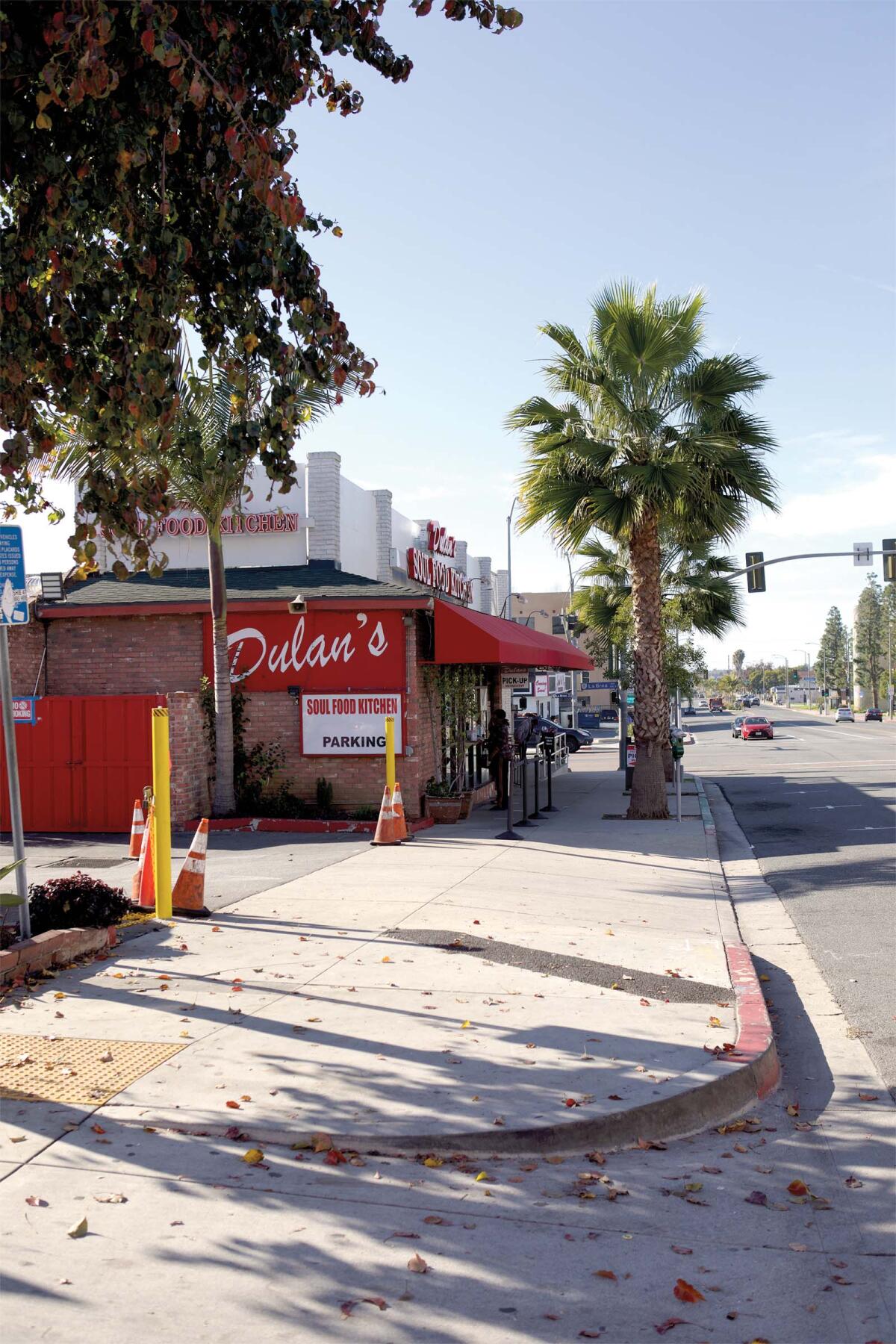Inglewood Offers a Blueprint for a More Diverse California – And U.S. – City

- Share via
It’s easy, perhaps, living within the bright lights (and oft-false narratives) of Hollywood to have a pre-picture of the idyllic American main street – low-slung business rows, stately older homes with well-kept yards and front fences, busy shoppers, diners and other patrons milling about on a warm evening. But where is this city … and what do its residents look like?
If it appeared in your mind as vaguely “middle America” and overwhelmingly white, it’s part of a longstanding narrative that an American city can only be one thing – namely middle-class, monolithic in race, gender identity and creed, and in a location deemed “wholesome” or “safe” by nondescript decision-makers. Of course, in the year 2022, we know this place does not exist, nor should it. A diverse city, with a multi-ethnic and broad social makeup, is in fact the model of cities that can provide a future of equity, inclusion, and concurrently, empathy and tolerance.
Over the past eight years, Inglewood has dominated this conversation. The Los Angeles County city of 110,000, populated by an over 90% minority population, both subverts the concept of what a “typical American city” looks like and models the future for cities that embrace inclusion and equity. The demographics speak for themselves — the population of Inglewood is 93% Black and Brown, the highest percentage this particular demographic of the 482 cities in California and one of the largest minority-majority populations in the country.
But the divergence from the old “main street” narrative does not end there. The population of Inglewood is also surprisingly young – a median age of just 29 years old, nearly seven years younger than that of Los Angeles (which itself has a high-percentage youth demographic.) On average, this group is well-educated, upwardly mobile, innovative and thirsty for progress.
This diverse population is either indigenous and has chosen to remain in Inglewood or migrated to Inglewood to make the city their adopted home. With this, the economics of Inglewood have changed with the decrease in crime, investment in infrastructure and the negotiations that have lured three professional sports teams (and their huge economic impact) to the City of Champions.

The leaders of Inglewood have constructed a thoughtful and strategic system of local governance. In a Southern California that is oftentimes crushingly expensive, often creating factors leading to displacement as opposed to generational wealth, Inglewood has thought and acted innovatively to protect its existing residents, the city’s culture, and provide affordable housing. This is especially important in a city that was affected by the historic practices of redlining, segregation and other byproducts of systemic racism. Mayor James T. Butts Jr. devised City Ordinance No. 20-03, which enacted a citywide 3% rent cap annually. It was unanimously passed into law by the Inglewood City Council.
This cap, which went into effect in 2019, coincided with the opening of SoFi Stadium in the city, a huge redevelopment project that also coincided with escalating property values and rent prices. Inglewood’s rent cap has mitigated, by design, a runaway escalation in rent prices. But that was just the beginning of the Mayor’s fight for the indigenous population of Inglewood.
A condition associated with successful cities is the production of property owners and correspondingly, generational wealth, for its residents. Passing down owned property, especially that which is rapidly increasing in value, is one way this can be achieved. The availability of good paying jobs, job training and access to those jobs is needed. With the advent of so much development in Inglewood over the course of the last few years (and the coming decade), Mayor Butts also put into place local-hire mandates. The mandates ensured that between 30 and 35% of those involved in the construction of the monumental buildings, their infrastructure and the related support were Inglewood residents, giving them access to good paying jobs. This allowed them to maintain their place in the neighborhood and maintain the path to that generational wealth.
Safety is also a huge part of the city’s ethos. While Inglewood has been branded as being unsafe, the truth is that during Mayor Butts’ tenure the city has widely reduced crime, resulting in nine consecutive years of the lowest crime in its recorded history. The City Chief and Police leadership team engage the community, and the city offers alternatives for youth who may otherwise find their way into criminal activities. With a decade of these initiatives already in play, the feeling of safety is palpable, making Inglewood markedly safer than many surrounding neighborhoods.
With indigenous residents staying in town, they’re free to make it their own. This in part leads to opening small businesses, many of which are dotting the Inglewood main street landscape as well as expanding to other parts of Southern California. Orleans & York, a unique concept featuring New York deli sandwiches with soul-food-inspired po’boys and other favorites, started in Inglewood and now has five area locations. Black, female-owned Sip & Sonder serves elevated coffee on Market Street. Three Weavers, an award-winning craft brewery, has its tasting room in Inglewood and distributes beer throughout California and beyond. Other small businesses have expanded their offerings into Inglewood, including Dulan’s and HIlltop Coffee. 1010 Wine and Events on LaBrea Avenue is the latest trendy newcomer to the Inglewood scene.
All of this redefines what a modern American city can be and lays out a rubric for what the next generations – both Millennials and Generation Z – will look for in living standards. With concepts like walkability, sustainability, local control, equity, diversity and safety in the forefront, Inglewood is destined to be a standard-bearer for what main street could and should look like in the next decade and beyond.